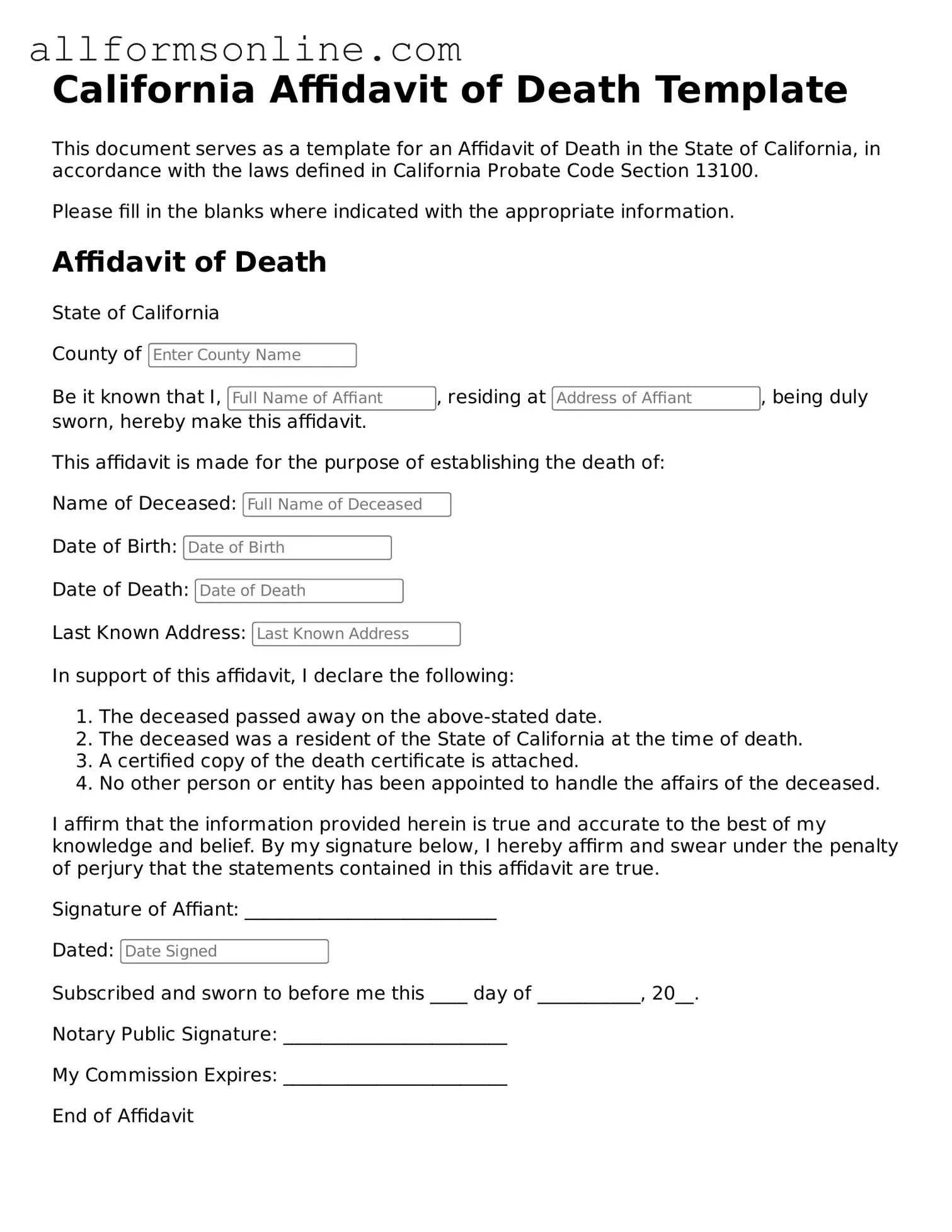How to Use California Affidavit of Death
After gathering the necessary information, you are ready to fill out the California Affidavit of Death form. This form is important for officially documenting a person's death and may be required for various legal processes. Follow these steps carefully to ensure the form is completed accurately.
- Begin by entering the name of the deceased in the designated space. Include their full legal name.
- Next, provide the date of death. This should be the official date as recorded on the death certificate.
- Fill in the deceased's address at the time of death. Include the street address, city, state, and zip code.
- Identify yourself as the affiant. Write your full name and your relationship to the deceased. This establishes your authority to complete the form.
- Sign the form in the appropriate section. Your signature confirms the truthfulness of the information provided.
- Date your signature. This should be the date on which you completed the form.
- Have the form notarized. A notary public will verify your identity and witness your signature, adding an official seal.
Once the form is filled out and notarized, it can be submitted to the relevant parties, such as banks, insurance companies, or courts, as needed to settle the deceased's affairs.
